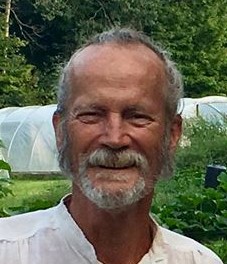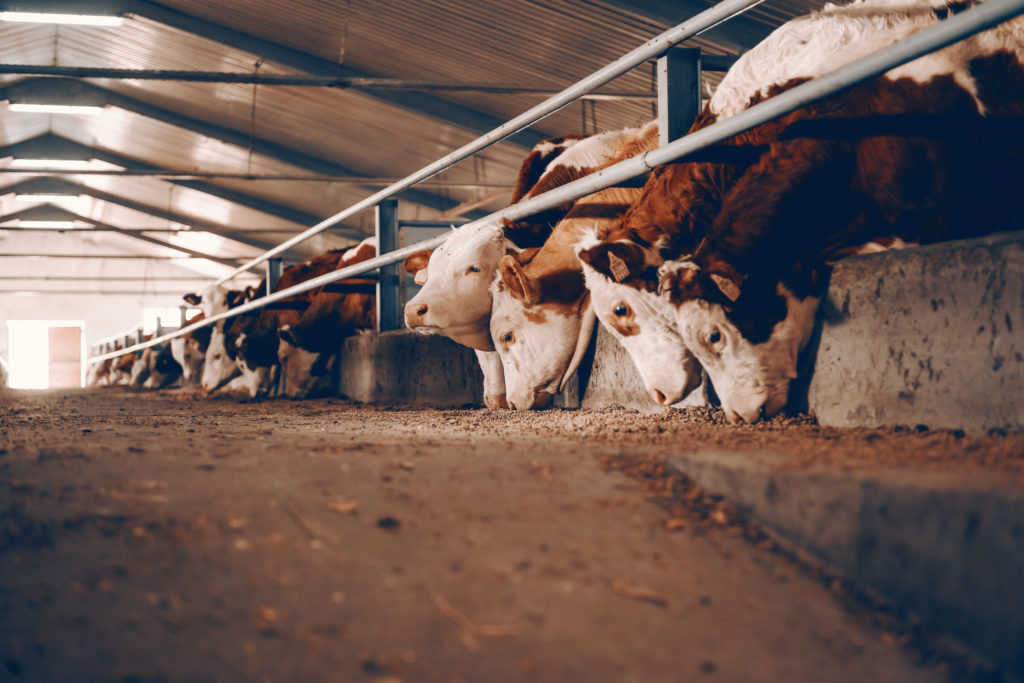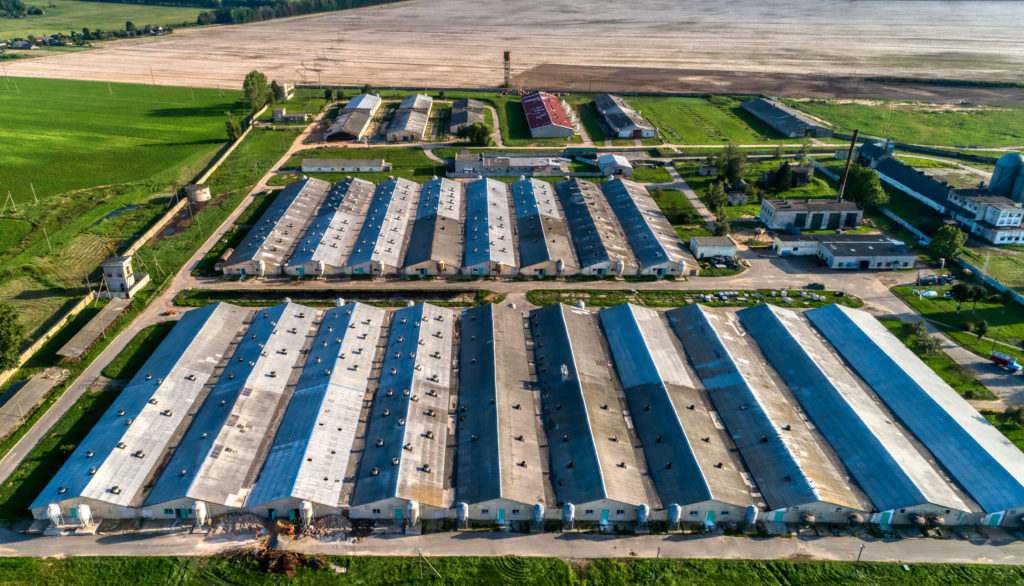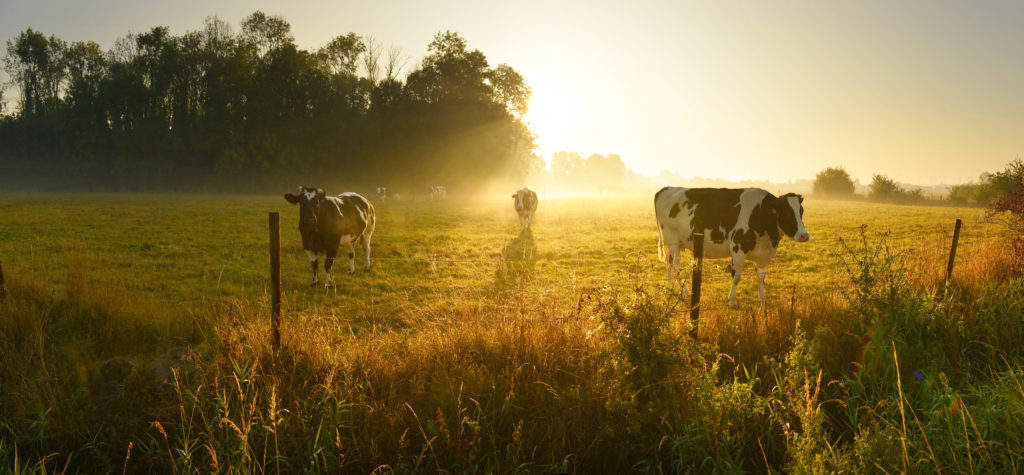March 24, 2020
By Mike Miles, Treasurer, Polk-Burnett Wisconsin Farmers Union

Editor’s note: Mike Miles and his wife Barb run Anathoth Farm in Polk County. Mike serves as Treasurer of the Polk-Burnett Wisconsin Farmers Union (WFU). WFU is grassroots and member-driven. This year, the Polk-Burnett chapter voted to adopt three priorities: first, to organize a local food alliance in western Wisconsin; second, to celebrate, likely through a fall harvest event; third, to educate about and organize against a proposed 26,000-head hog farrowing operation which, if approved, would be the largest hog Concentrated Animal Feeding Operation (CAFO) in the state. In the following piece, Mike writes about CAFOs, the local campaign to stop this particular CAFO, and regenerative agriculture.
Get Big or Get Out
Last summer, while attending the World Dairy Expo in Madison, Wisconsin, Secretary of Agriculture Sonny Perdue unloaded both barrels at local dairy farmers who were suffering through a crisis that resulted in more farm bankruptcies in Wisconsin than any other state: “In America, the big get bigger and the small go out. I don’t think in America we, for any small business, we have a guaranteed income or guaranteed profitability.” (Perdue was reiterating the infamous Earl Butz, Secretary of Agriculture from 1971-1976, whose mantra to farmers was: “Get big or get out.”)
Perdue implied that it is your fault if you fail–that is just how competition works in American capitalism. What he failed to mention is that you could be the best farmer that ever lived, but if the creamery in your region stops picking up your milk you are simply out of the picture. And why would the creamery stop buying milk from such a good farmer? Because they could buy it for less from another producer, one who might well be out-of-state but has scaled up production with more cows and bulk feed so they can sell their milk at a lower price.
Scaled up production is possible as companies vertically integrate their business, essentially controlling the entire life cycle of a product: for example, a Monsanto or Cargill might own the grain, the cow, the meat or dairy processing facility, and the marketing and sales process. Such vertical integration allows, for example, Costco to price their rotisserie chicken at a loss–selling below production costs–just to get consumers into the store. Once that genie is out of the bottle and farms start going out of business, the remaining farms expand their operations, renting or buying vacant land so they can stay in the game.

Rural communities start to decline when one farm with 10,000 animals replaces twenty farms with 500 animals. Rural ghost towns pop up across the country as fewer people live in homes, pay taxes, buy materials at the local hardware store and lumber yard, send kids to school, need retail and community services, and so on. In addition, as farms expand, animal waste becomes more and more concentrated on fewer acres of land which can poison both ground and surface water and also release industrial air pollutants that smell bad and harm health.
CAFOs: A 26,000-Head Hog Farrowing Operation
In 2019, there were 304 Concentrated Animal Feeding Operations (CAFOs) in Wisconsin. CAFOs are defined as 1,000 “animal units,” which in the government’s definition equals 700 dairy cows. (For more on CAFOs, see here.)
Ninety percent of Wisconsin’s CAFOs are dairy operations. But hog CAFO operators have their eye on this area: the largest hog operation in the state has been proposed for Burnett County in a township that contains the headwaters of the Trade River, a tributary of the St. Croix River which flows into the Mississippi and down to the Gulf of Mexico.

A retiring farmer wants to sell forty acres to a corporation in Iowa, which wants to build a 26,000-head hog farrowing operation. The operation, managed by absentee owners, would produce upwards of 250,000 pigs every year. Those pigs would then be spread around the region and likely raised on farms that are “small” enough to avoid regulations.
As local residents caught wind of what was happening, they turned out in droves to push back and figure out how they could protect their water, air quality, and property values. The farmer wanting to sell his land to the CAFO was also the township’s board chairman and had been for the last twenty years. A conflict of interest lawsuit was filed against him; he has been removed as chairman until his upcoming trial.
In addition, the township where the hog mothership hopes to land has hired a lawyer who is collaborating with another lawyer personally impacted by the CAFO as he has a summer place on a lake in the township. Together they have drafted a township zoning ordinance. Their intent is to make it difficult for the CAFO to comply with these new zoning restrictions.

Zoning and CAFOs
All of us are impacted by federal, state, county, and township regulations; these laws, statutes, and ordinances can either build on or contradict each other. The state of Wisconsin regulates how and where CAFOs can operate. But because they are beholden to various agricultural lobby groups, the state regulations are lax when it comes to CAFOs, which are often given permission to locate almost anywhere they want. So, if the state’s regulations do not adequately protect human and environmental health, local people can then organize to influence their county and township regulations.
Setbacks are a good example of how nonsensical all this can become. Setbacks regulate the distance required between, for example, a CAFO’s manure pits and neighboring properties. At the state level, setbacks are generally measured in the hundreds of feet. In reality, a CAFO operation’s impacts are measured in miles. Odors can be detected up to six miles away. Surface waters can be impacted dozens of miles away; aquifer or groundwater contamination can be spread across square miles. And, just the rumor of a CAFO can negatively impact property values so much that people cannot sell their homes.
CAFO operators generally seek out vacant farmland in townships that have little or no zoning. If they find an agreeable location and complete their permit applications without anyone noticing, they can begin building; once that happens it is almost impossible to stop them. In our region, both the Burnett County Board and the Polk County Board were pressured by citizen groups to adopt moratoriums against CAFOs. Moratoriums do not stop CAFOs permanently, but they do provide counties a window of time to research the impacts a CAFO would have, based on the specific conditions in a local area. Moratoriums generally last six to twelve months; when concluded, counties can then adopt zoning that will either deny or allow that CAFO to proceed.
If townships do not agree with the county’s conclusions, they can try to adopt their own regulations. More often than not, the differences between the regulatory agencies and the would-be CAFO operator end up in court for protracted and expensive legal battles.
Wisconsin Farmers Union: Regenerative Agriculture
The Polk Burnett Wisconsin Farmers Union has adopted a strong stance against the proposed 26,000-head hog operation. The union is convinced that “get big or go out” is not the future of agriculture. Worldwide, farmers increasingly see regenerative practices, rather than conventional commodity agriculture, as the direction in which farming needs to move. Practices like cover cropping, rotational grazing, and holistic animal management build soil health, increase water infiltration, promote biological fertility and pest prevention, sequester carbon, and produce the most nutrient-dense and healthiest food products available. In addition, direct marketing through, for example, farm to table production and Community Supported Agriculture allows farmers to set their own prices instead of receiving just $.14 out of every dollar spent on food.

Both public and private sector funding is available for regenerative agricultural practices. The University of Wisconsin Madison just received $10 million out of a $78 million United States Department of Agriculture (USDA) grant to promote regenerative grazing. The USDA, Indigo Agriculture, The World Bank, Food Animal Concerns Trust, and dozens more are funding carbon sequestration projects in order to keep cover crops on landscapes year-round.
Locally, the Polk Burnett Wisconsin Farmers Union (PBWFU) chapter is working with Farm Table Foundation, The Natural Alternative Food Coop, farmers’ markets, CSAs, and local restaurants to promote our local food economy. Ken Meter, a food systems analyst out of Minneapolis, presented at a PBWFU event last fall on how small family farms are the most effective economic engines in rural areas.
Regenerative agriculture offers one of the best ways for new farmers to get started because less infrastructure and machinery is needed to get an operation up and running. YouTube is loaded with examples of farmers starting out on rented or leased land–needing nothing but portable electric fencing, movable animal pens, and a source of water. Many of these operations in northern latitudes can be seasonal. In addition, the Farm Service Administration (FSA) has funding opportunities for new farmers and veterans. That enthusiasm is building for these kinds of operations can be seen at the MOSES (Midwest Organic and Sustainable Educational Services) conference in La Crosse, Wisconsin: it is the largest organic farming conference in the nation and young farmers abound.
We have a stark choice before us: to watch rural areas become national sacrifice zones, brought about through production processes embodied in CAFOs, or to work toward recreating diverse rural landscapes characterized by small- to medium-sized regenerative farms, agritourism, animal pastoralists, artisanal cheese makers, vineyards, and farm-based breweries and bakeries.
As May Sarton says, “We change people, if we do at all, by being something irresistible, not by demanding something impossible.” It’s time for a new vision of agriculture to shine.
Steps You Can Take
1) Join Wisconsin Farmers Union or Minnesota Farmers Union. Without pressure on policy, we will be stuck with the same old same old forever. (Non-farmers can join.)
2) Vote with your plate. Buy local. Buy often.
3) Pay attention to your county board wherever you live. They make more decisions that impact your daily life than any other jurisdiction. Contact your county supervisor.
4) CAFOs: get informed. Start with KnowCAFOs.org.
5) Grow a garden no matter how small. In 1944, Victory Gardens in the United States produced as much fruit and vegetables as all commercial operations combined.
6) “Never doubt that a small group of thoughtful, committed citizens can change the world; indeed, it’s the only thing that ever has.” Margaret Mead
Mike Miles has been a Catholic Worker farmer for 35 years. He practices agro-ecology, is a grazing specialist, and a member of the Wisconsin Farmers Union. He and his partner Barb founded Anathoth Community Farm as a center for non-violence, community, and sustainable living.
